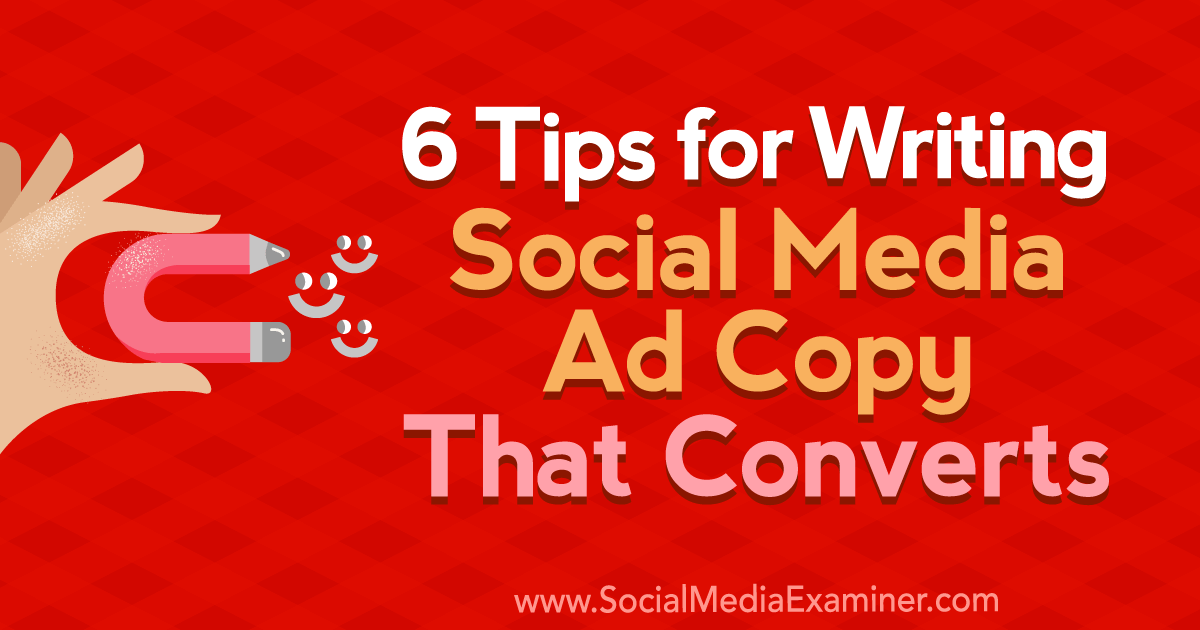
 Do you want to create more effective social media ads? Wondering how to write ad copy that produces conversions?
Do you want to create more effective social media ads? Wondering how to write ad copy that produces conversions?
In this article, you’ll discover six tips for writing social media ad copy that converts.
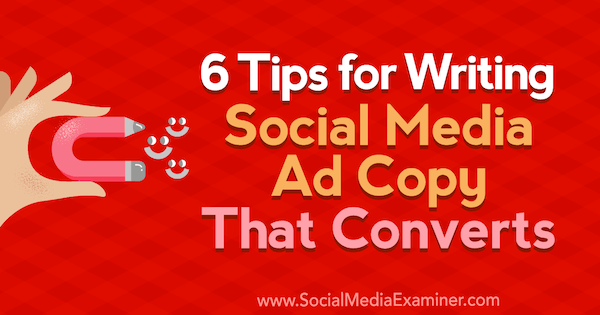
#1: Extend Your Brand Voice to Your Ad Copy
Every business needs to have its own voice, one that mimics that of its followers. When users scroll the feed, they should be able to recognize your brand voice immediately.
If your brand is more of a cargo short and t-shirt vibe, avoid using words that reflect a suit and tie mentality. The wording in your ad copy needs to mimic your other posts and include the language your demographic uses. Incorporate local lingo, slang, and grammar to match. Yes, how you spell the words in your ad makes a huge difference here.
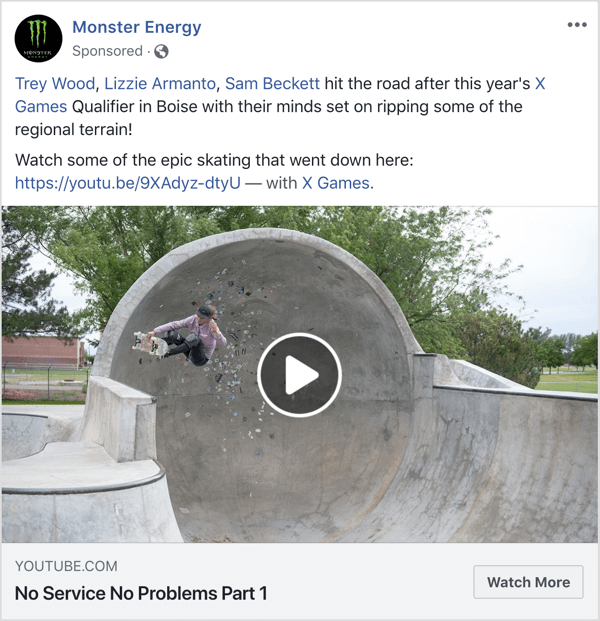
The same goes if you’re a B2B that uses more professional and business-like language when you speak and write. Mimic that style in your ad copy.
#2: Clearly Communicate the Who, What, When, Where, and Why
Your social media ads not only need to include a call to action but also answer the who, what, when, where, and why. Communicating these details helps ensure users have all of the information they need to know so when they do engage with the ad, they become a warm engagement and not just a casual liker who double-taps on everything they scroll through.
If you look at this WeWork ad, here’s how they answered each W:
- Who: WeWork
- What: Flexible workspace for any size company
- When: Today
- Where: WeWork offices
- Why: Because they’re here to help my business grow
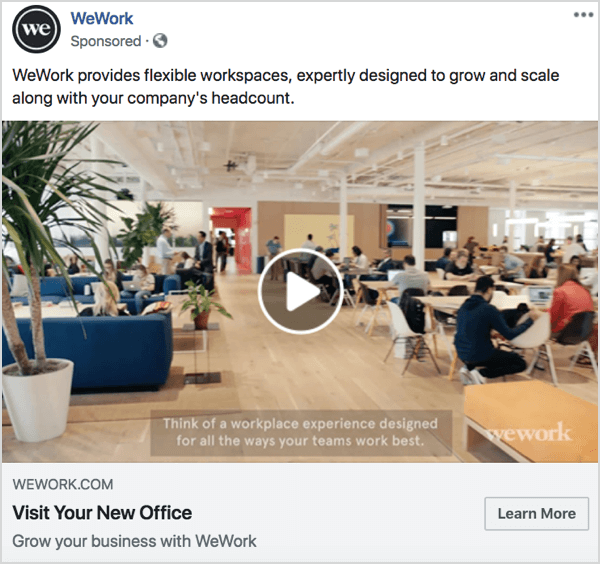
Go back to the social media ads you’re currently running. Does the ad copy answer the who, what, when, where, and why for the user? It should, and if it doesn’t, pause, edit, and republish those ads.
If you’re having a hard time trying to get an answer for all of the W’s above, think about your target demographic’s pain points. For WeWork, their target demographic is startups that need office floor plans from a business that can customize them. To make a great story out of your ad copy, you need to know your audience and understand not only what makes them tick but also what they need.
#3: Test Ad Copy Length for Performance
On some social media platforms, you have the option to use longer ad copy, but that doesn’t necessarily mean you should use all of that real estate. If you can communicate your call to action or primary point in three to five words, do so.
Some social media experts argue that shorter copy is more effective, while others say longer copy converts better; split testing will help you discover which copy length your audience prefers. What’s most important is getting to the point and ensuring users understand the message you’re conveying.
In the WeWork ad above, the point is crystal clear. The ad is both informative and provides an incentive for users to act. If you want to take a tour of the WeWork offices because you’re looking for a custom floor plan for your new startup office space, click Learn More and schedule a visit.
The imagery is an added bonus and harmonizes the text point perfectly by showing the interior of a WeWork custom office floor plan. The image helps paint the picture of what the text is describing.
About Split Testing
The more engagement your social media ads receive, the more those social platforms will want to show your ad—given budget restrictions, of course.
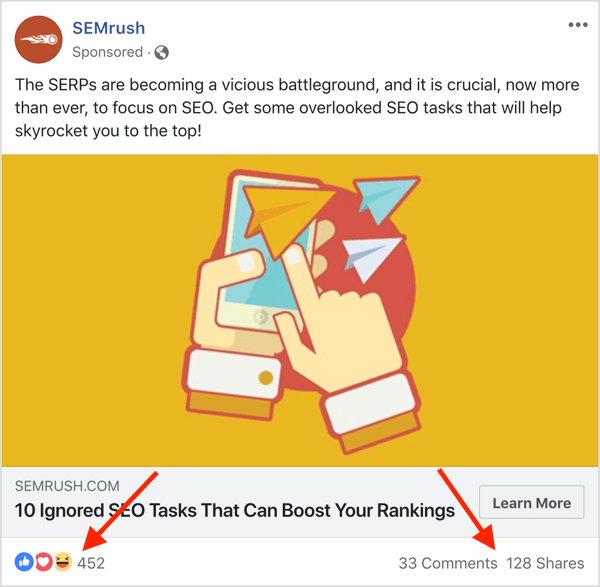
If you’re competing with businesses that have large ad budgets, focus on creating ads that followers naturally want to like, comment, share, or even click through. A/B test different ad copy, ad copy length, and jargon to better understand what makes people click.
Once you have that data, it’s time to amplify. Put a majority of your budget on those sweet spot ad copy ideas and set the rest aside to go back and A/B test even more. Remember, testing never ends. People’s preferences change as fast as technology changes. When photography gets better, and videography becomes more accessible, we only want to engage with the best.
#4: Combine Your Copy With Complementary Visuals and Targeting
One of the reasons users flock to social media platforms is to take a break and be entertained by what they read and see. They’re bored at the DMV, they’re waiting for their food to arrive at the table, or their attention span of 3 seconds has expired, and it’s time to look down at their phone again.
Whatever the reason, it’s important that both your text and content space are harmonious. Having creative to enhance your text is like adding extra-credit points on a quiz. Your text gets the call to action (the primary point) made, but the visual further communicates that point.
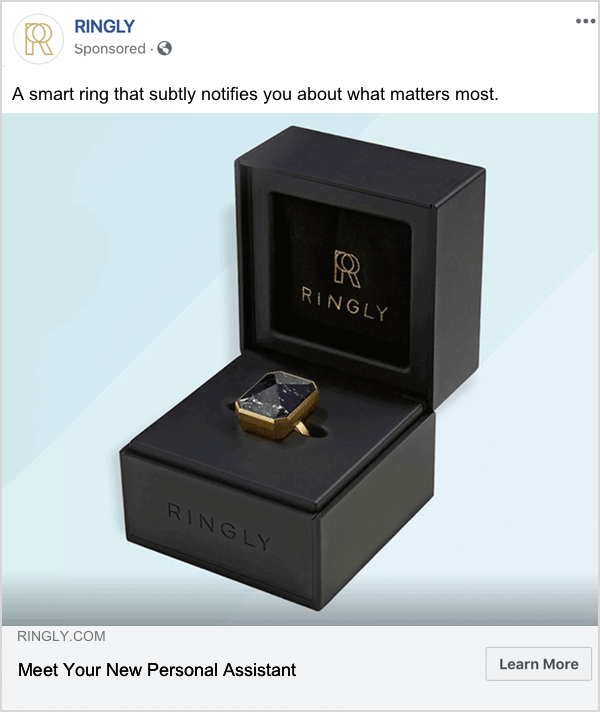
I’m a bride-to-be who’s also a business owner and entrepreneur, so Ringly’s targeted ad stopped my scrolling fingers in their tracks specifically because of how they combined the text with the image.
After looking at the ring and being impressed, I then gazed up to read the ad copy. Hmm, what’s a “smart ring”? Naturally, my eyes then scrolled down to the headline and then it made sense: It’s a personal assistant inside the ring. Now I’m intrigued to learn more.
Make sure all of the components of your ad (the description, headline, URL) all work together and deliver a story to users. This will make users more likely to want to learn more and not just “like” the ad.
#5: Align Your Ad Copy With Specific Sales Funnel Targeting
Ad copy is essentially sales copy. But with social media ads, it can’t look or feel like sales copy at all. There is no intent on social media platforms so you can’t come in with a hard sell like you can on AdWords. That’s a big reason why the conversion cycle for social media ads can take a bit longer than other marketing efforts and have more hurdles to jump through.
To help get around the anti-sales hurdle, think of the TOFU (top of the funnel) > MOFU (middle of the funnel) > BOFU (bottom of the funnel) strategy. While this entails creating lots of ads and custom audiences, the results will make it worth the effort.
TOFU
This ad is designed for the top of the funnel sales copy. It’s light, harmless, and a friendly neighborhood wave. Your ad copy should let users know that your brand or business exists and you’d just like to say hello. You’re not trying to sell or force users to take any action with this ad. I repeat, no selling!
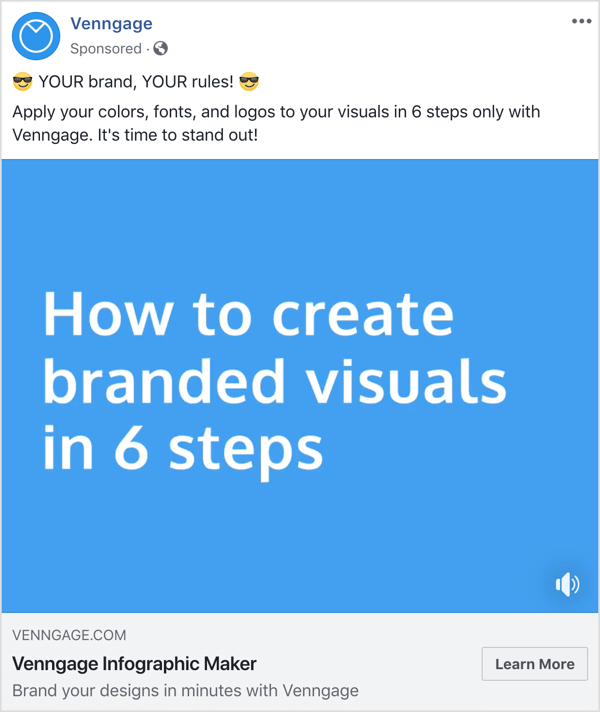
This is a very soft touchpoint. Each person who engages with this ad gets categorized into a new custom audience and is shown a MOFU ad.
MOFU
All right, now they know you exist. They’ve heard your brand voice, seen imagery to match, and developed a light feel for who you are. Now let them know how you can help. In the ad copy, explain what you provide and what pain points you solve.
Again, you aren’t selling yet. You’ve waved to the user from across the street and are now knocking on their door with a plate of freshly baked cookies. All of your TOFU audiences that engage with this ad get placed into a separate custom audience, a warmer audience.
BOFU
Now’s the time to ask for the sale. Here’s where you include the discount code, the hard call to action, the immediacy, the full story. You already have a warm audience that knows your brand and understands what you offer. Now give them all you’ve got and convert those users.
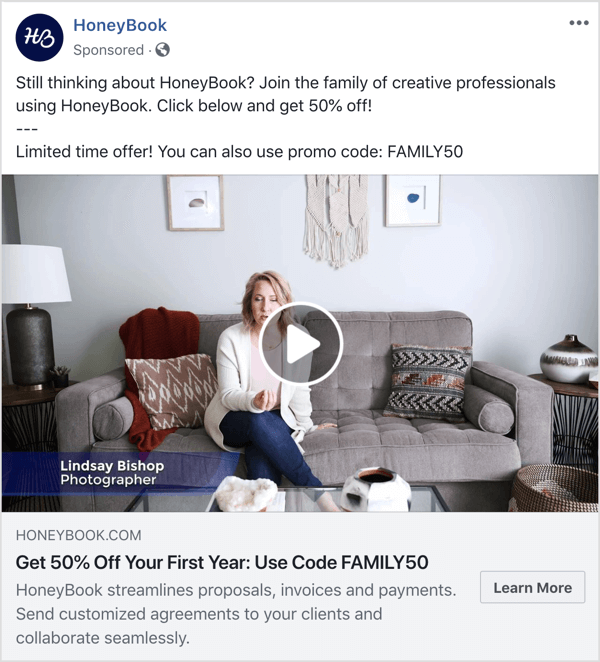
Anyone who engages with this ad is officially a hot lead and more likely to convert than the nice TOFU audience that waved back from across the street. You’ve officially been invited inside the house and you have a chance to talk business over coffee in the kitchen.
Conclusion
A good social media ad isn’t just a high-contrast image or a 45-second video. The ad copy itself can make or break engagement rates. It’s time to get past the idea that we’re all too busy to read.
Your ad copy needs to inform and entertain social media users to grab their attention in the news feed. If you’re going to interrupt them and stop them in their scrolling tracks, give them something worth their while.
What do you think? Do you use some of these tactics when writing copy for your social media ads? What tips would you add to this list? Please share your thoughts in the comments below.
More articles about social media advertising:
- Learn how to create six refined target audiences for your Facebook and Instagram campaigns.
- Find out how to target your prospects and customers using Matched Audiences on LinkedIn.
- Discover seven common factors that impede Facebook ad performance.
The post 6 Tips for Writing Social Media Ad Copy That Converts appeared first on Social Media Examiner.



